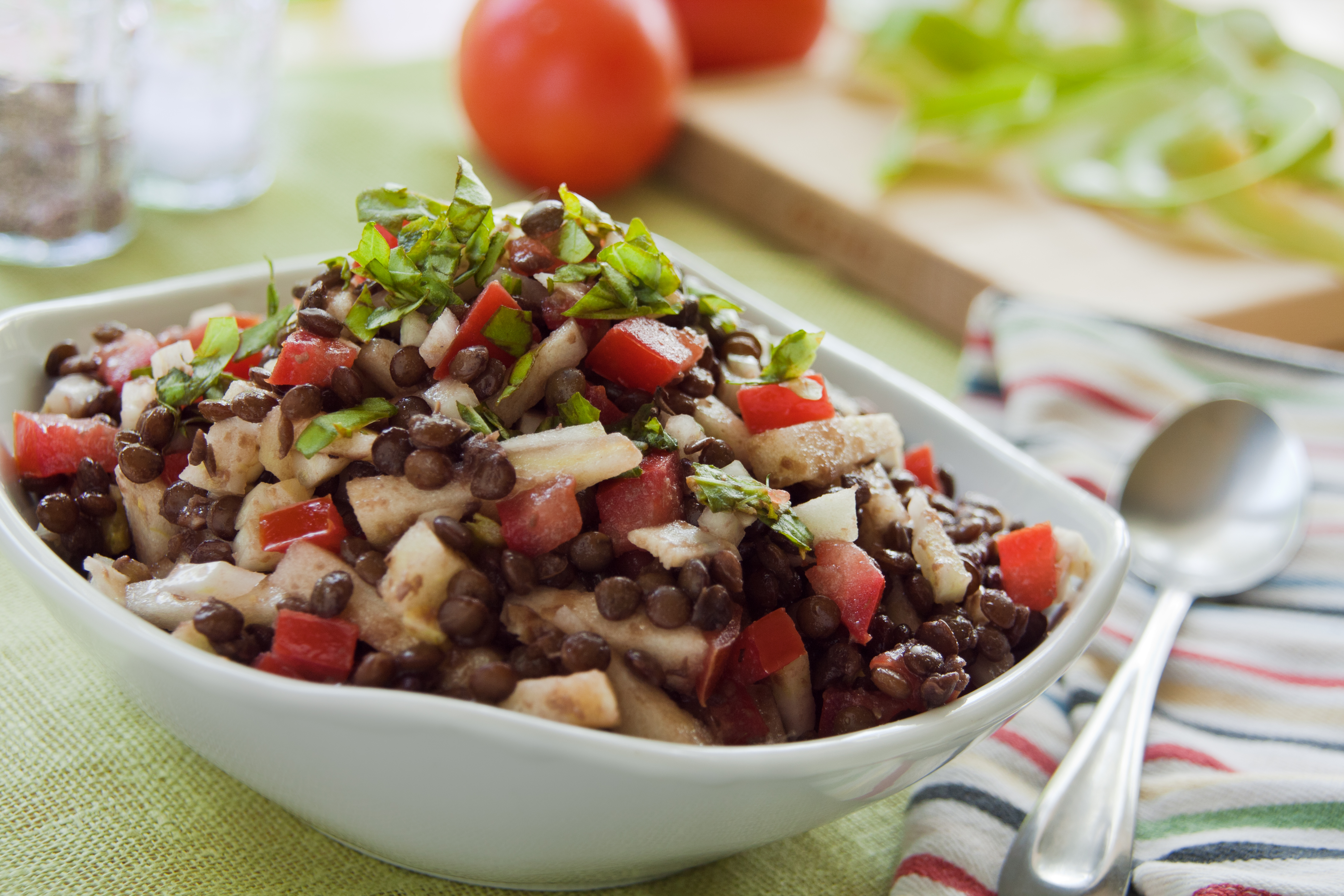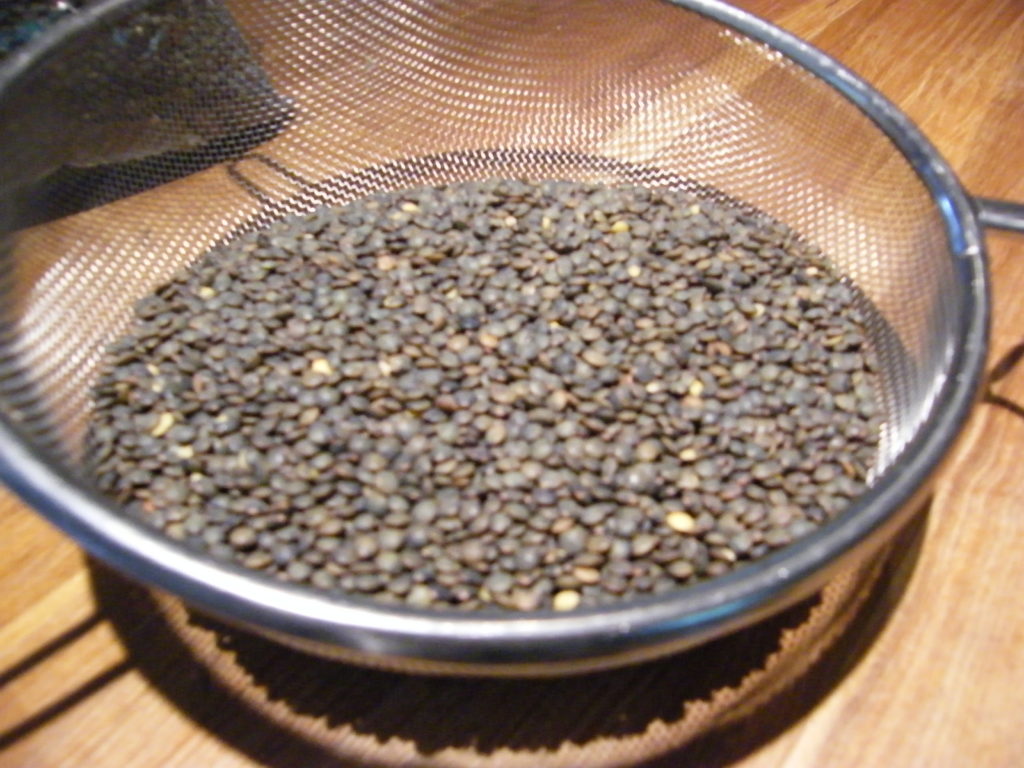Hey folks, quick series intro note: I’m Melissa, the blog editor for Guiding Stars. I also happen to be married to the photographer who does the recipe photography for this site. If we have a photo of a finished dish, I’ve probably put it in my mouth. In the three or so years John and I have been half living off of Guiding Stars recipes, I’ve been introduced to a lot of ingredients that were new to me and a little intimidating. We realized that many of you might be facing similar struggles with odd ingredients, so I’m going to walk you through my experiences with unusual items, including how to cook with them, my honest opinions of them, and where to find them. Have an ingredient you’re afraid to try? Send me a request in the comments below!
Let’s Talk Lentils

Growing up in rural Maine, I always though that lentil was just another moniker for split peas, those little lovelies that cook into a scrumptiously heavy winter soup. Not so! I still don’t know exactly what to make of the botanical difference between dried field peas (split peas) and pulses (lentils), but I can give you a quick breakdown on what’s generally out there and what to do with it.
Split peas (Green or yellow) – Usually found in the dried bean / soup mix section of the supermarket. I see green more often in New England, but as I understand it, yellow is preferred as you head south. These are not lentils, but either one would make great Slow Cooker Split Pea Soup.
Red or yellow lentils (sometimes called Egyptian) – The only ones I can find regularly are red lentils, which are sometimes with the dried beans and sometimes in the Indian section. If you have an Indian or Middle Eastern grocer near you, it’s a good bet that they’ll have the specific variety you’re after. These cook pretty quickly (much, much faster than split peas) and are generally what you’ll want for dishes like dal. I think they’re awesome in these Spicy Lentil Wraps.
Green or black lentils (sometimes called French or Puy) – I had a tough time finding these. The recipes calls for canned, but in rural Maine, I just wasn’t finding them. I did, however, find dried French lentils at my local Reny’s, which I checked because they have a weirdly good selection of otherwise hard to find dried goods, like kamut and teff and all those up-and-coming ancient grains. These take a little longer to cook than red/yellow lentils and are a bit bigger and chewier, and they’re the ones you’re going to want for French dishes. They were fantastic in this Lentil Salad with Apples.
Brown Lentils – This is probably the easiest variety to find in your local dried bean section. They’re texturally in between red and green, which makes them a decent all purpose lentil, but in my opinion, not as good as either red or green because they’re too tough for some applications and too mushy for others. They did well enough for French Lentils with Chard, but I think they’re best in situations like Veggie Loaf (which I have tried and liked, even though it hasn’t been photographed yet).
How to Cook Lentils

I’m going to focus on French lentils for process, but the biggest thing that changes between red and green and brown is cook time.
Step 1: Sort and rinse. Look for any little rocks – it’s rare to find any, but we’re talking an expensive visit to the dentist if you’re unlucky, so give them a look before you rinse them.
Step 2: Decide how much to cook. If you’re working with a recipe that calls for canned lentils, know that a 15 oz. can contains about 1 1/2 cups. Lentils roughly double in size when cooked, so I would start with about 3/4 cups of dried lentils per can.
Step 3: In a pot with plenty of head room, combine water and lentils in a 2:1 proportion, e.g., 2 cups of water and 1 cup of lentils. Add a pinch of salt and any flavor components you’re inclined to use. Garlic, onion, bay leaf, herbs de provence…whatever makes sense for the final dish.
Step 4: Bring to a simmer. Keep at a gentle simmer to 20-30 minutes, or until lentils are tender. Add water as needed to keep the lentils covered; drain any excess liquid.
How to Use Lentils
I’ve given you a couple delicious recipe suggestions above, but if none of those appeal, there are plenty of promising options in our recipe database. You can also just toss the lentils with whatever veg and dressing you have on hand to turn leftover veggies into a quick salad – they work hot or cold. They also make great filling for tacos or burritos – mix them up with whatever seasoning and veggies you like. Maybe pesto and tomatoes or chipotle peppers and sweet potatoes? The only real limit is your imagination – lentils are a great, nutritious blank slate for building a culinary masterpiece, so don’t hesitate to give them a try.
And don’t forget! If there’s an ingredient you want to know more about, leave a comment below and I’ll cover it if I can.